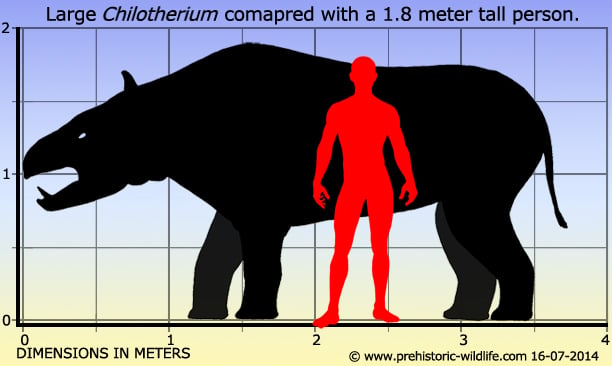In Depth
Chilotherium is a genus of prehistoric rhinoceros that seems to have had a geographic distribution spreading across Asia all the way up to Eastern Europe. Chilotherium had no nasal horns like rhinoceros are often portrayed as having, but Chilotherium still remained quite unique. Two tusks formed from enlarged incisor teeth rose up from the lower jaw, and while these tusks were present in male and female Chilotherium, they seem to have been larger in the males. This would indicate that the upward facing tusks had a display purpose, thought he fact that they were also present in females would suggest a species recognition purpose as well as a possible practical application. Some species of Chilotherium are noted as browsers, while others seem to be dedicated grazers.
A fossil skull of a female Chilotherium has been preserved with partially healed tooth marks that may have been caused by an attacking Dinocrocuta.
Further Reading
- Nashorner der Hipparion-fauna Nord-Chinas. - Palaeontologia Sinica 1 (4): 1–159. - T. Ringstr�m - 1924. – Sexual Dimorphism in Perissodactyl Rhinocerotid Chilotherium wimani from the Late Miocene of the Linxia Basin (Gansu, China). - Acta Palaeontologica Polonica 55 (4): 587–97. - Shaokun Chen, Tao Deng, Sukuan Hou, Qinqin Shi. – A primitive species of Chilotherium (Perissodactyla, Rhinocerotidae) from the Late Miocene of the Linxia Basin (Gansu, China). - Cainozoic Research 5(1/2):93-102.. - Tao Deng - 2006.










